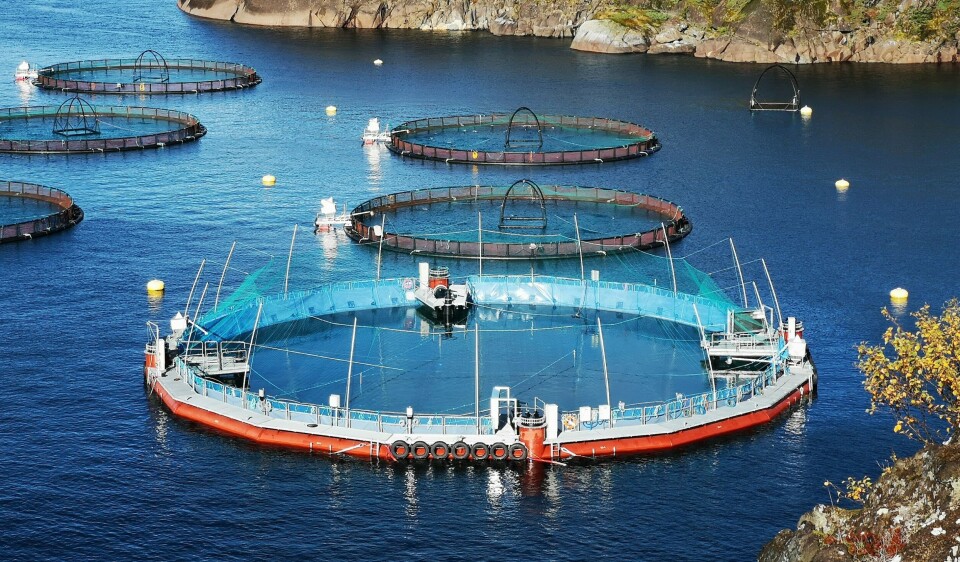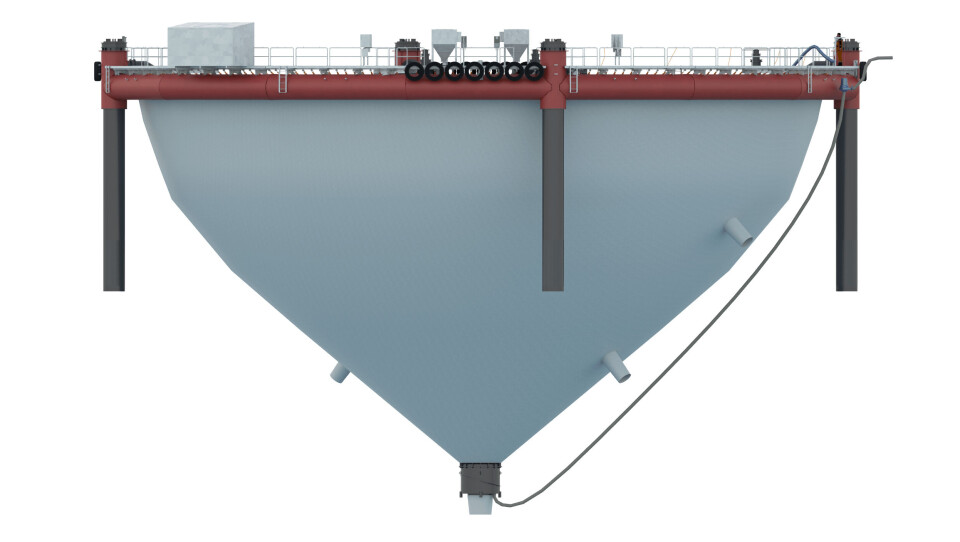
Cermaq puts first smolts into tarpaulin-wall closed cage
Salmon farmer Cermaq has taken a step towards developing closed farming technology by transferring smolts into its new closed containment system in Horsvågen, Norway.
The tarpaulin-walled pen is built to provide maximum bio-security and fish welfare, Cermaq said in a press release. Water will be pumped into the pen from a depth of 13 metres, below the sea lice layer. The tarp wall is made of strong and flexible composite, which minimises escape risk. This is the world’s largest closed cage using flexible walls.
Long wait
“We have been working on this project for a long time, and we are happy that we now are ready to put fish into the pen”, said Frode Holmvaag, manager seawater Nordland in Cermaq Norway. “This is new technology to us, and it will be very interesting to follow the growth and development of the fish in the new containment system.”
Cermaq is focusing on innovations that improve sustainable farming at existing locations in coastal areas. The new closed containment system, which has been constructed in partnership with Norwegian tarpaulin manufacturer Botngaard AS and French fabric producer Serge Ferrari, is certified for locations with a significant wave height of two metres and can be used at most existing Norwegian sea sites.

Milestone
“The delivery and start-up of the closed cage in Horsvågen mark a milestone for Botngaard and our development program for closed cages. We will now work together with Cermaq and our industry partners to further improve the technology and daily operations of the cage,” said Botngaard’s system delivery manager Magnus Stendal.
Serge Ferrari has developed the membrane wall that makes the containment system flexible and safe.
“After six years spent on R&D on various topics such as non-toxic formulation, as little elongation as possible and excellent lifetime, Serge Ferrari has come up with a new membrane dedicated to flexible closed cages: our Biobrane Aqua 2050. This highly secure fabric gives security against fish escape, more than ever,” said the company’s market manager environment and energy, Gabriel Faysse.
Scientific cooperation
Cermaq said it will cooperate closely with groups of scientists to optimise the new closed containment system.
“There are still a lot of things we don’t know about closed containment systems. We see that closed containment systems in the ocean can play an important role in the aquaculture industry in the future, but it still requires further development,” said Harald Takle, R&D manager farming technology in Cermaq Group. “This is why we have applied for development licences with the FlexiFarm concept, which takes closed containment systems a giant step further as it will include cost-effective water treatment against infections and allow harvest-size production in more exposed areas.”
Cermaq, a wholly-owned subsidiary of Japan’s Mitsubishi Corporation, farms in Norway, Chile and British Columbia, Canada.























































